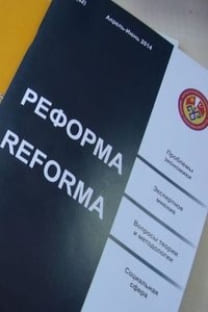REMITTANCES AND EMPLOYMENT YOUTH IN KYRGYZSTAN
Since the independence Kyrgyzstan have experienced social and economic issues, such as poverty and unemployment. This caused mass migration of labor force and now Kyrgyzstan receives about remittances that account for 30% of GDP. This paper aims to analyse remittances impact on employment, in particularly of youth population. Results of multinomial logit model estimations show that migrants’ remittances increases probability of choice being unemployed and home worker among youth population.
Anahtar Kelimeler:
Employment, Remittances, Migration, Labour Supply, Kyrgyzstan
REMITTANCES AND EMPLOYMENT YOUTH IN KYRGYZSTAN
Since the independence Kyrgyzstan have experienced social and economic issues, such as poverty and unemployment. This caused mass migration of labor force and now Kyrgyzstan receives about remittances that account for 30% of GDP. This paper aims to analyse remittances impact on employment, in particularly of youth population. Results of multinomial logit model estimations show that migrants’ remittances increases probability of choice being unemployed and home worker among youth population.
Keywords:
Employment, Remittances, Migration, Labour Supply, Kyrgyzstan,
___
- Adams, R. (2004): “Remittances and Poverty in Guatemala”, World Bank Policy Research Working Paper, 3418.
- Funkhouser, E. (1992): “Migration from Nicaragua: Some Recent Evidence,” World Development, 20(8), p.1209-18.
- Killingsworth, Mark R. (1983): “Labour Supply,” Cambridge: Cambridge University Press.
- Lokshin, M. and E. Glinskaya (2008): “The effect of male migration for work on employment patterns of females in Nepal,” The World Bank, Policy Research Working Paper 4757.
- Lucas, R. (1987): "Emigration to South Africa.s Mines," American Economic Review, 89, 1337 - 57.
- Piracha, M., Randazzo, T. and F. Vadean (2013): “Remittances and Occupational Outcomes of the Household Members Left-Behind,” IZA DP No. 7582.
- Zhu, N. and X. Luo (2008): “The impact of remittances on rural poverty and inequality in China,” World Bank Policy Research Working Paper, No. 4637.
- Эконометрика [Текст]: учеб. / Под ред. И.И. Елисеевой. – М.: Проспект, 2010. – С. 106-125.
- ISSN: 1694-5158
- Yayın Aralığı: Yılda 2 Sayı
- Başlangıç: 1999
- Yayıncı: Kırgızistan Türkiye Manas Üniversitesi
Sayıdaki Diğer Makaleler
THE STATE'S ROLE IN THE IMPLEMENTATION OF THE NATIONAL INNOVATION
TEKSTIL ÜRÜNLERI TÜKETIMININ LOGIT MODELI YÖNTEMIYLE ANALIZI
Anarkül URDALETOVA, Ebru ÇAĞLAYAN, Gülnara KARADENİZ
FOREIGN ECONOMIC POLICY OF CHINA IN KYRGYZSTAN
REMITTANCES AND EMPLOYMENT YOUTH IN KYRGYZSTAN
Kamalbek KARYMSHAKOV, Raziya ABDİEVA, Burulcha SULAİMANOVA
KIRGIZİSTAN’IN MUHASEBE KÜLTÜRÜ
TERRORISM AND ORGANIZED CRIME: THREATS TO NATIONAL SECURITY OF CENTRAL ASIA
REGIONAL DIAGNOSIS OF PROBABLE DIRECTIONS OF TECHNOLOGY IMPORT IN THE KYRGYZ REPUBLIC
THE STATE'S ROLE IN THE IMPLEMENTATION OF THE NATIONAL INNOVATION
